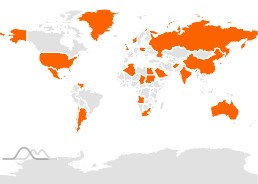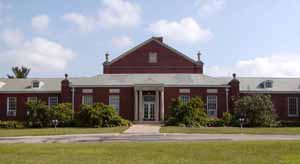Since at least 1892, Italian students have been attending the University of Illinois. Early Italian Illini have included accountants, actors, architects, chemists, civil engineers, computer scientists, fundraisers, language instructors, lawyers, literary scholars, musicians, politicians, and teachers too.
Read on to learn about early Italian Illini!
Before the first students came directly from Italy to study at the University of Illinois, a great many early Illinois and Italian connections were already in place. Early Illinois graduates included the children of Italian immigrants, immigrants who spent part of their childhood in Italy, and of course faculty and staff with Italian roots too.
Early Faculty and Staff
Dr. Attilio Filippo Sbedico, of San Vito Chietino, was an Instructor of Romance Languages (1909-1911). [1] After completing his bachelors degree at Collegio Giambattista (G.B.) Vico in Chieti, then completing his dissertation on Giosuè Carducci at the University of Pennsylvania, Dr. Sbedico came to Illinois where he taught for two years. Dr. Sbedico was an active member in Italian Club, where he spoke on Gabriele D’Annunzio‘s “La nave” and Giosuè Carducci‘s Inno a Satana. Also, on December 8, 1909, the Cosmopolitan Club hosted an Italian Night including Dr. Sbedico giving a talk titled “Rome of the Renaissance”. Dr. Sbedico was active in other romance language clubs too. For a November 1910 Spanish Club meeting, he presented a talk on the Portuguese writer and politician Teófilo Braga titled “Teófilo Braga as a Literary Man” where he argued that Mr. Braga “embodies the best literary spirit of his time”. In the summer of 1911, Dr. Sbedico married local resident and Illini Miss Ida J. Stolle (Music 1905-1908) and they honeymooned in New York. In the fall, Dr. Sbedico resigned and took a faculty appointment at the University of Washington. [2] In the following spring, one last publication from Dr. Sbedico was printed in the new issue of Illinois Magazine, titled “Student Life at Italian Universities”.
Angelo Benedetto Marino Corrubia, of Barile, was an Instructor of Architecture (1911-1915) and he was hired during a great wave of over one hundred faculty appointments in 1911, The Daily Illini reported. [3] Mr. Corrubia was also a graduate of the University of Washington with years of experience in architectural construction. In 1912, Mr. Corrubia, three other architectural faculty members, and eight students, embarked on a summer-long architectural study tour of Europe, including, of course Italy. In 1913, The Daily Illini reported that University Hall (the predecessor to today’s Illini Union) was also home to a collection of art produced by faculty, including as many as eight watercolors of Italian architecture. A few years later, Mr. Corrubia relocated to St. Louis, where he was both an accomplished architect and an accomplished landscape painter too.
Early Italian Students
The first Italian American student might have been Frank Henry Gazzolo, (B.S. Chemistry, 1896), of Chicago, who was the son of Italian immigrants from Genoa. [4] Mr. Gazzolo kept in-touch with campus as an alumni. After graduation, The Illini reported, he got a dog and he moved to Massachusetts where he completed a Master’s Degree at Harvard. After graduation, Mr. Gazzolo returned to Chicago, where he became president of the Gazzolo Drug & Chemical Company.
Mr. Paul Charles Simonini, (B.S. Civil Engineering, 1912), of Chicago, may have been the second Italian American student. [5] He was an athlete too. During his freshmen year, Mr. Simonini was quarterback of the freshmen football team (and he later ran unsuccessfully for the position of football manager). By 1907, Mr. Simonini was a member of Centro Literario Espanol. By 1908, he co-founded the Italian Club and he was secretary for the Catholic student organization Spaulding Guild too. In 1911, he was appointed as a member of the Senior Stag Committee and he published an article in the Technograph titled “Central Station Heating“.
Another early Italian student was Mr. Michele F. Cimbalo (1908-1910), who did not graduate but did contribute nonetheless to campus life in Illinois as well as Italy too. [6] Shortly after arriving in town, Mr. Cimbalo co-founded an Italian Club in 1908, and he helped reinstate the Social Science Club in 1909. Besides being a student officer in two registered student organizations, Mr. Cimbalo was also a member of the Hermean Society and Cosmopolitan Club too. In fact, he gave at least one talk titled, “Italians in America” for the Cosmopolitan Club in 1909. After three years of study, Mr. Cimbalo left the University in 1911. Later that year, The Illini reported, Mr. Cimbalo ran for alderman in Chicago’s nineteenth ward and he had joined a socialist political party too.
Mr. Michele Francisco Croce, (B.S. Chemistry, 1913), of Panni, moved to the United States at a young age. [7] Mr. Croce was a member of multiple student groups, including the Science Union, Italian Club, and Spanish Club too. From Daily Illini articles, we know that Mr. Croce once performed as a police officer at a Science Union party, he read Giuseppe Giusti‘s poem “Lo Stivale” for an Italian Club event, and he was a member of a quartet in a Spanish Club short play.
Mr. Michael Joseph Faletti, (LL.B. 1917), of Braidwood, Illinois was the son of Italian immigrants from Pertoso. Mr. Faletti was a member of the literary society Philomathean and a writer for The Daily Illini too. In Philomathean, Mr. Faletti was active in talks and competitive debates regarding student dances, healthcare, the formation of a defensive Pan-American alliance, and even contemporary politics. In 1915, Mr. Faletti joined others and he signed a campus petition to stay the infamous execution of Leo Frank in Georgia in 1915. Within three years of graduation, Mr. Faletti was elected state’s attorney of Putnam County, Illinois.
Mr. Victor Anthony Pecchia, (B.S. Civil Engineering, 1917), of Chicago, was the son of Italian immigrants from Lucca. From Daily Illini records, we know that Mr. Pecchia was an athlete and student leader too. For the friendly basketball games between the seniors and juniors of the College of Agriculture and College of Engineering respectively, Mr. Pecchia was a guard for his junior team. He was a secretary for Civil Engineering Club in 1916. During academic year 1916-1917, he ran for 1916-1917 student council, he attended at least one off campus smoker, he was secretary for the new student chapter of the American Association for Engineers, and he was a chorus member of the 1917 student opera “Keep to the Right”.
Mr. Emil Amelotti (B.S. Electrical Engineering, 1925, M.S. 1926) was a regular source of information on Italy on campus. In 1925, at the First Congregational Church, he was part of a foreign student panel talk “George Washingtons of other Lands“, including students from Germany, China, and the Philippines too, where he described Benito Mussolini. The following semester, Mr. Amelotti gave another talk on Italy as a guest of the Wesley Foundation, a few months before pledging for honorary mathematics organization Pi Mu Epsilon. Later, he would join the honorary scientific organization Sigma Xi too.
Italian Organizations
Circolo Dante Alighieri
The first Italian Literary Society on campus, “Circolo Dante Alighieri” (later “Italian Club“) Some Italian Club events included included well-attended performances of “Cavalleria rusticana” (May 1908) “Pagliocci” (May 1908), a faculty lecture on Torquato Tasso (February 1909), as well as off campus meetings at the home of faculty advisor and Math Professor Ernest J. Wilczynski (February 1909).
During winter break, 1908, there was a great earthquake in southern Italy, resulting in the near destruction of cities including Messina and Reggio Calabria. Within one week, under Mr. Cimbalo’s leadership, Italian Club organized a fundraising program. Funds were raised through subscriptions by greek letter organizations, independent students, faculty, and staff. A fundraising “tag day” was set for following week. For the tag day events, Italian Club sought as many as 100 University women to solicit donations in the community and an evening assembly was organized at the University Chapel with guest speakers including University Vice-President Thomas J. Burrill, Professor Graham Taylor of Chicago, Professor Wilczynski, and of course Mr. Cimbalo.
Italian Arts Club
In December 1927, a new Italian cultural organization was formed, known as “Italian Arts Club”, open to anyone interested in Italian arts. Although much documentation about early activities have not yet been identified, at least as early as 1929 there were special events like Venetian Night. The 1929 Venetian Night included multiple different cultural music performances including Alice Skora performing Lizst‘s “French Melody” on the piano, Angela Giaconda and Evelyn Ehman singing multiple Spanish Language songs, and Oscar Porto performing Simonetti’s Madrigale on violin. The Italian Arts Club announcements continued in The Daily Illini through the early or late 1930s.
Italian Events on Campus
At least as early as the 1920s, Italian cultural events had expanded in size from student and faculty organization events to dance hall or theater-sized affairs. In 1926, the Junior Prom planners chose to have Rome as the theme of their annual dance. In December of 1933, “I Pagliacci” was performed on campus. In 1941, Puccini’s “Madam Butterfly” was staged too. Over time, like the Italian Language program, Italian arts would continue to hold significant roles in education at Illinois.
By the time of the Italy’s post World War Two institutional referendum to determine the form of the Italian government after the war, on June 2, 1946, over fifty years of Italians and Italian Americans had come to the University of Illinois. From early faculty with Italian roots, to Italian immigrants and their children, every generation of Italian Illini brought something different to campus. Given an already impressive half century of scholarly activity and engagement in the arts, the contributions of later and future Italian Illini remain promising.
Are you an Italian Illini? Do you know someone who is? We’d like to hear from you! Please send us a message or leave a comment below. We want to include you and your story, as we celebrate the first 150 years of the University of Illinois.
Happy First 150 everyone!
References
[1] “Attilio Fillippo Sbedico”, The Semi-Centennial Alumni Record of the University of Illinois, Edited by Franklin W. Scott, page 940.
[2] “Ida Josephine Stolle”, University of Illinois Directory, 1918, Edited by Vergil V Phelps, page 639.
[3] “Angelo Benedetto Marino Corrubia” The Semi-Centennial Alumni Record of the University of Illinois, Edited by Franklin W. Scott, page 858.
[4] “Frank Henry Gazzolo”, page 92.
[5] “Paul Charles Simonini” page 473.
[6] “Michele F. Cimbalo”, University of Illinois Directory, 1918, Edited by Vergil V Phelps, page 119.
[7] “Michele Francisco Croce” The Semi-Centennial Alumni Record of the University of Illinois, Edited by Franklin W. Scott, page 488.
[8] “Michael Joseph Faletti”, page 669.
[9] “Victor Anthony Pecchia”, page 690.









